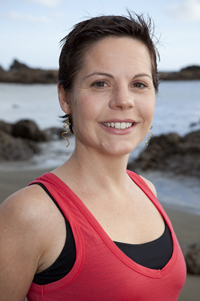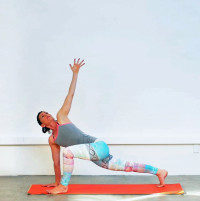by Kelly Fisher, Urban Yoga
Kelly, one of our go-to senior teachers, answers questions from readers about how to teach and what to do when issues come up. If you’ve got questions you’d like to be answered in our blog, email us at editor@theyogalunchbox.co.nz.
The Yoga Teacher’s Question:
“How do I deal with very different levels of students in the same class? As much as I would like to have all the students of similar levels in one class, it never seems to work out that way.
Also, how do I deal with over-ambitious students jumping into asanas before I can spot or adjust? I’m worried they will overtax and possibly injure themselves.”
Kelly our Yoga Teacher gives her Answer:
“No matter how well you try to segregate different levels of students, there will always be varying abilities in the room. The way I handle it is to ensure I teach poses with options.
I start by teaching the most basic of whatever pose/sequence it is and observe how well students are coping. If there are some who can do more, you lay out the next option. Again, observe and see if any more complex/challenging version would serve any of the students and if so, offer it. In a normal class, I would stick to about two or three options in any pose. More than that becomes overwhelming and confusing for the students.
For example, for a twisted variation of a lunge you could start by offering a lunge with the back knee down, keeping the spine relatively upright, twist to place the back of the opposite hand on the outside of the front knee. This is a good option for beginners or pregnant women.
If that goes well, you could suggest students hook their elbow outside the front knee. If it looks like there are folks who could do more, you could offer the option of lifting up the back knee if it’s a standing pose oriented class or you could offer the option of binding their hands under the front thigh if you’ve done lots of shoulder opening prior to that pose.
Over ambitious students can be handled in line with the progression of options above. If you start by teaching the most basic and safe option, they have to follow along because they don’t know where you’re headed. Even the most experienced student can get something out of a basic pose done really mindfully and well.
If you invite students to self-inquiry (“how does this feel, can I breathe well in this pose?”) before you offer the next progression, ambitious students may find they have enough going on. Obviously, they may still jump too far ahead but if you’ve got a handle on offering the options progressively, you can always go over and say (or offer to the group) “so, now that you’ve chosen the next option, how do you feel? Is there as much ease in your body here?”
Sometimes you’ll have to say directly “to my eye, it seems like you’re uncomfortable (or going to potentially injure your knee or you’re not breathing as well) and it might serve you better to go back an option.” If you’ve had them self-enquire, they will most often have a sense of that already and now you’re just giving them permission to honour it instead of trying to be a badass.
Of course, sometimes, people won’t listen but if you’ve created the right environment and tried your best to keep them safe, it’s on them if they hurt themselves. There is a lot of learning to be had through injury.”
About Kelly
 Kelly Fisher, e-RYT 500, has made yoga her full-time career since 2005 having spent most of the previous decade in big business IT and part of the decade before that studying Neuropsychology. Over the course of her yoga career, Kelly has studied with many teachers from various lineages including Iyengar, Astanga, Satyananda, Prana Flow and Anusara and has investigated related sciences Ayurveda, Acupuncture and Craniosacral therapy. She is grateful for the support and advice she has had on her journey.
Kelly Fisher, e-RYT 500, has made yoga her full-time career since 2005 having spent most of the previous decade in big business IT and part of the decade before that studying Neuropsychology. Over the course of her yoga career, Kelly has studied with many teachers from various lineages including Iyengar, Astanga, Satyananda, Prana Flow and Anusara and has investigated related sciences Ayurveda, Acupuncture and Craniosacral therapy. She is grateful for the support and advice she has had on her journey.

